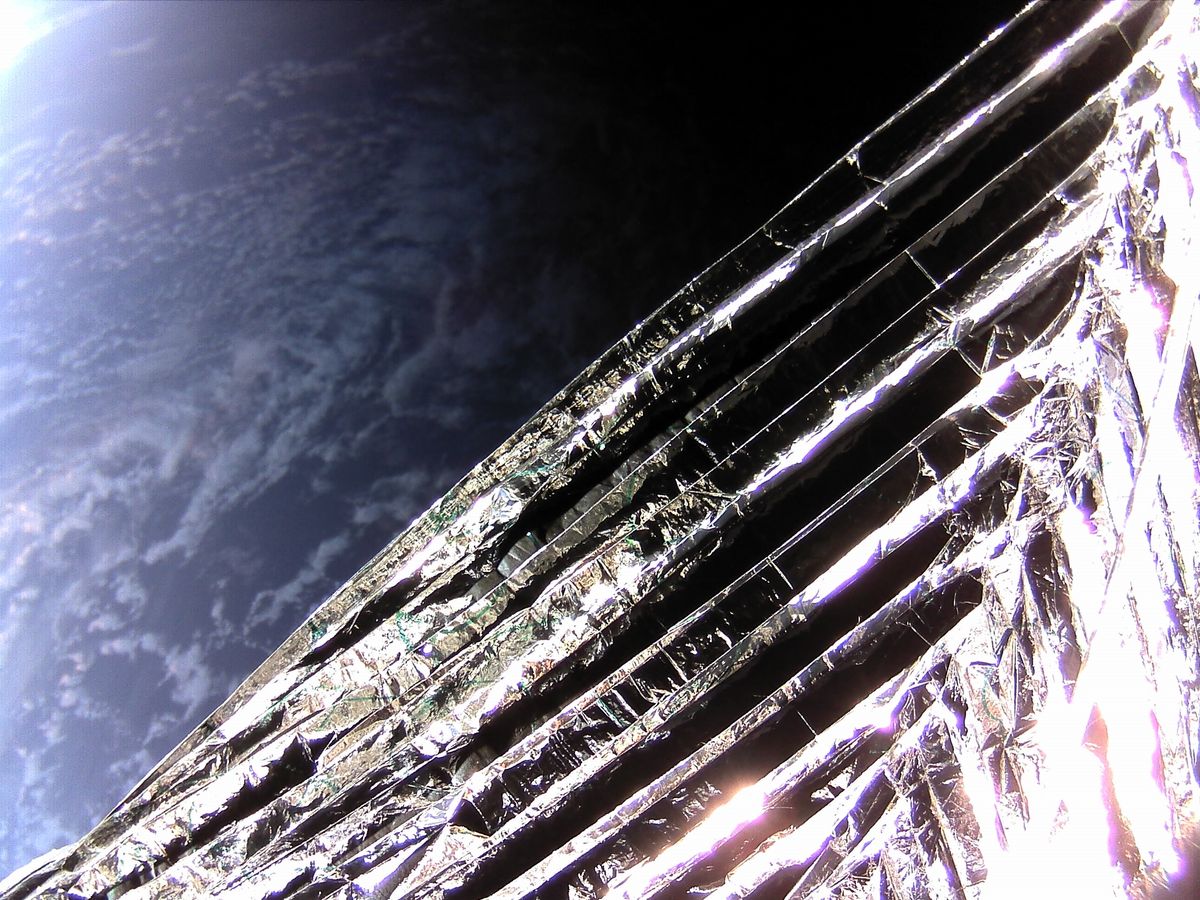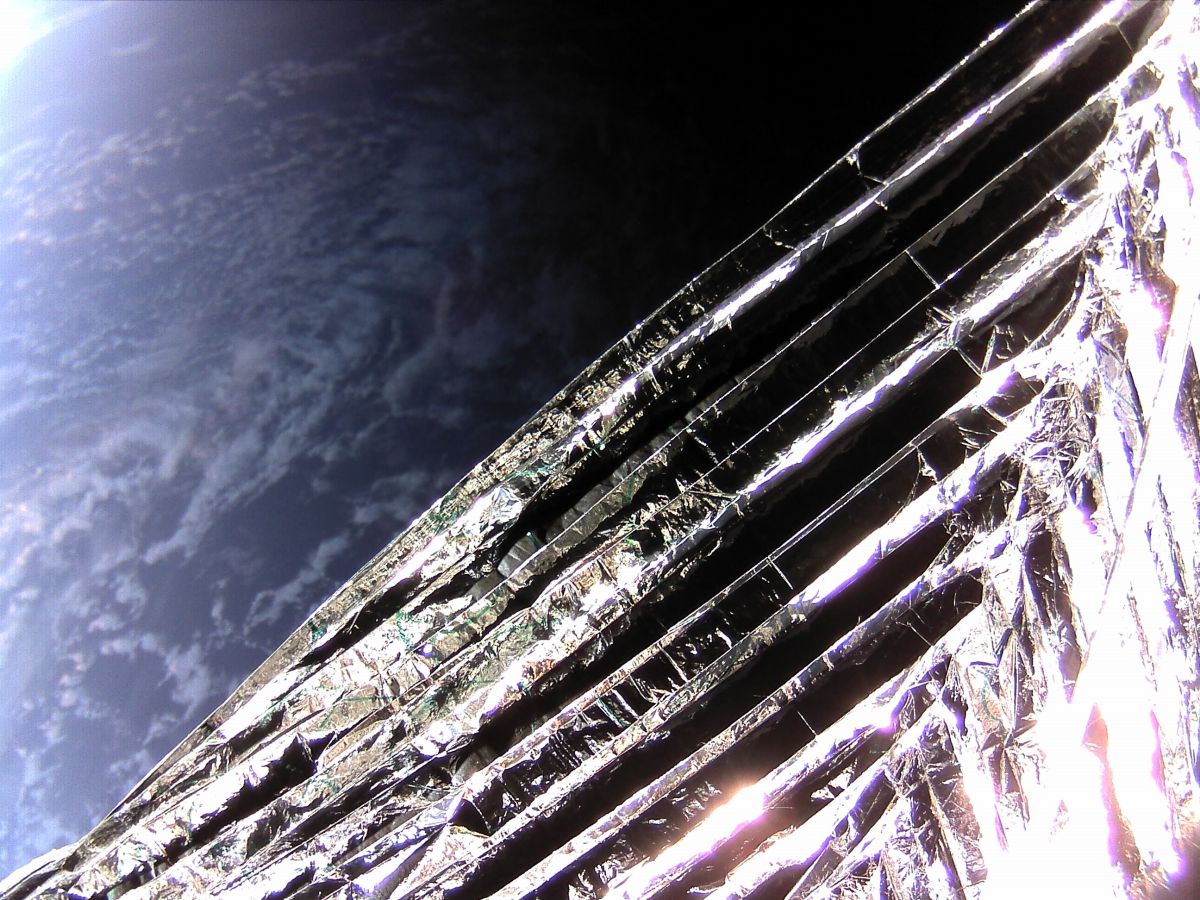
The European Space Agency (ESA) has successfully unfurled a sail aboard a used cubesat to help drag the spacecraft down into Earth’s atmosphere and out of orbit.
The Drag Augmentation Deorbiting System (ADEO) was deployed from an orbiting Ion satellite carrier in late December 2022. The sail will help catch more of Earth’s tenuous upper atmosphere, allowing the cubesat to come down in a matter of months rather than the years it would otherwise take, ESA officials said.
The 38.7-square-foot (3.6 square meters) aluminum-coated polyamide membrane sail provides a passive method of deorbiting; it increases the atmospheric surface drag effect and causes an accelerated decay in the satellite’s orbital altitude, according to an ESA statement (opens in new tab).
Related: The Kessler Syndrome and the space debris problem
The sail was deployed from a package measuring 3.93 by 3.93 by 3.93 inches (10 by 10 by 10 centimeters). The unfurling process was captured by an integrated camera onboard the Ion satellite carrier, which is operated by the Italian company D-Orbit.
The satellite will eventually burn up in the atmosphere, providing a quicker, residue-free method of disposal, according to ESA.
The camera view from a satellite 🛰️as it deploys a sail⛵️ – intended to help it burn up in the atmosphere faster 🔥 to keep space clear. This 3.6-m-area Drag Augmentation Deorbiting System, or ADEO, was developed by @HPS_GmbH 🇩🇪, supported by #ESATech https://t.co/fDJE8ykIIx pic.twitter.com/2ZIozXAIogFebruary 1, 2023
China similarly tested a 269-square-foot (25 square m) drag sail last year to help deorbit a payload adapter sooner than otherwise possible.
The ADEO test article is designed especially for deorbiting small satellites weighing between 2.2 and 220 pounds (1 to 100 kilograms).
The European mission, named “Show Me Your Wings,” is the final ADEO in-flight qualification test required to demonstrate the technological proof of concept.
Related stories:
ESA Director General Josef Aschbacher tweeted (opens in new tab) that the test was a “positive contribution towards ESA’s Zero Debris Initiative,” which aims to remove all European satellites from valuable orbits around Earth once their missions are completed.
The test model is the smallest variant of the ADEO drag sail product, but the approach will be scaled up for deployment on larger satellites. The largest version is 1076 square feet (100 square m).
The ADEO-N2 sail is part of D-Orbit’s “Wild Ride” Ion mission, which launched on SpaceX’s Transporter 2 flight in June 2021. The ADEO activity was funded by ESA’s General Support Technology Programme and was implemented by HPS (opens in new tab) (Germany) and its subsidiary in Romania.
Follow us @Spacedotcom (opens in new tab), or on Facebook (opens in new tab) and Instagram (opens in new tab).



